SEQUOIA (Day 4 - part 2)
We left the Congress Trail for a bit and followed another path out toward Circle Meadow.


Many of the trunks had large hollow sections.


At Room Tree...

...we crawled inside.

Looking out


The Founders Group is dedicated to the memory of the citizens who worked to create Sequoia National Park.

Still just a sapling...

... and one of the rare opportunities to be able to look at the sequoia needles!

Cattle Cabin was built by cattlemen who had acquired much of the Giant Forest for grazing purposes prior to the establishment of the national park. In 1890, after the park's creation, the land was leased to the men who supplied meat and milk to visitors and to soldiers who guarded the park from 1891 - 1913. Near the cabin is Circle Meadow which was the site of the slaughtering corral. By 1917, the last private holdings here had been purchased and deeded back to the government.

The Pillars of Hercules are a pair of apparently dead trees that resemble a giant gate. In ancient times, the "pillars" sat at the Strait of Gibraltar and guarded the entrance to the Mediterranean Sea. They are usually identified as the Rock of Gibraltar on the European side and Jebel Musa on the North African side in Morocco. They are fabled to have been set there by Hercules as a memorial to one of his twelve seemingly impossible labors, which he had to do as penance for murdering his wife and children during a moment of temporary insanity caused by the goddess Hera.
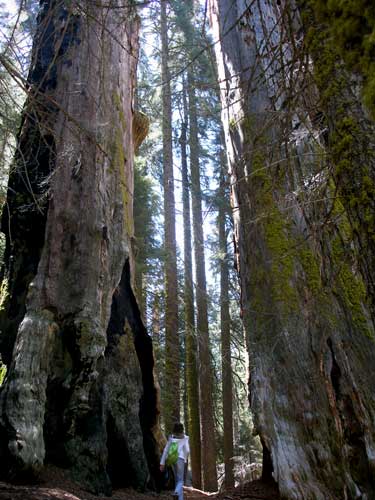
Brooke braves the gate!

The ominous looking Black Arch is completely hollowed out.
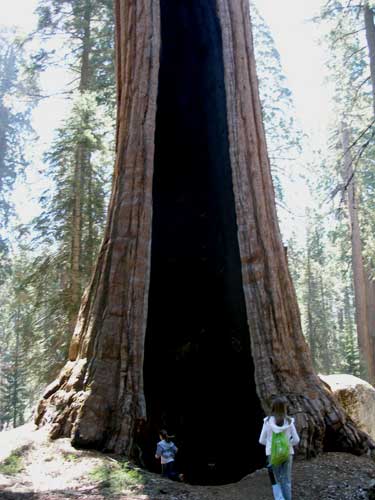
Heading into the darkness


Circle Meadow

A marmot pokes its head out to see what all the ruckus is about.

Bears Bathtub...

... for a rather skinny bear!

Just in case you think I'm making these names up!

Turning tail
We too decided to turn tail and head back to the trailhead. There was just too much to do to be able to see it all on such a short trip. Our next exciting stop.... Crystal Cave! At the parking lot were numerous bear boxes. We locked up our food then started the walk down the trail.
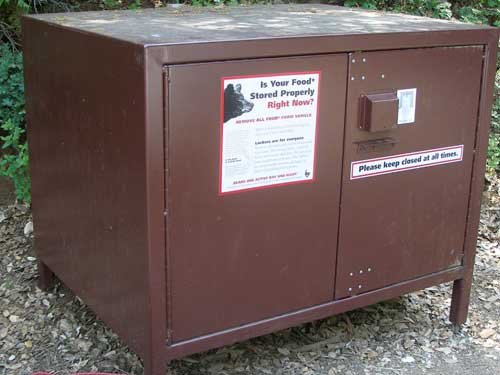


The trail down

Crystal Cave is formed in a marble ridge which contains the remnants of the ancestral Sierra Nevada mountains. Originally shallow sea deposits, schist (once muddy sea deposits), quartzite (formerly deposits of sand) and other metamorphic rocks were folded into ridges and valleys to form this ancient mountain range, which was eventually worn back down flat again, long before the uplift of the present range.
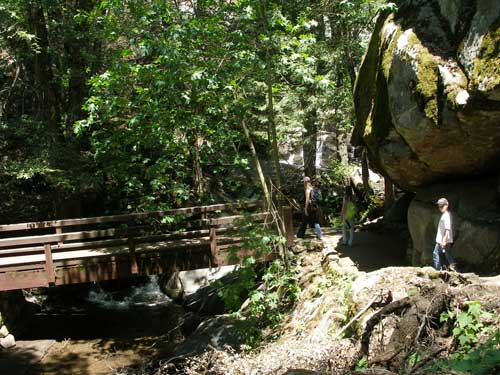


Leaves of three, let it be... poison oak

Waterfalls lined the path.
Crystal Cave is one of at least 240 known caves in the park. It was discovered in 1918 and opened to the public in 1940 after development by the Civilian conservation Corps.

The very cute spiderweb entrance gate

A sacrificial stone so people can get it out of their systems. The oils on our fingers create a barrier so that more calcite cannot stick to the surface and continue the growth of the formation. Basically, we kill it.

A channel of water in the cave

Cave popcorn, or coralloids, are small nodes that form on surfaces.
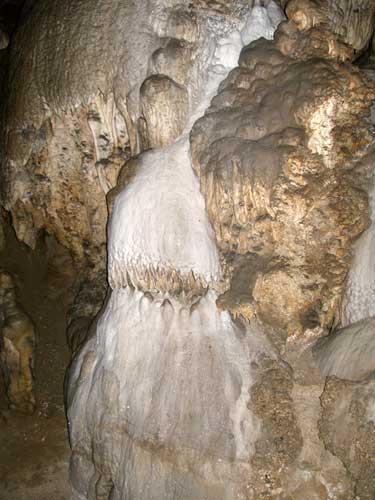
Flowstone is formed where water flows down the walls or along the floor. It is often described as a frozen waterfall. It can be pure white or have a reddish brown color, depending on the minerals present.

More flowstone


Draperies or curtains can be found hanging from walls, from ceilings or off the bottom of flowstone formations.


Squeezing our way through the passages

Soda straws are baby stalactites. Water dripping from the ceiling creates thin, hollow calcite tubes. As the water starts to flow over the outer surface of the straw, depositing more calcite, stalactites begin to form.
return • continue

